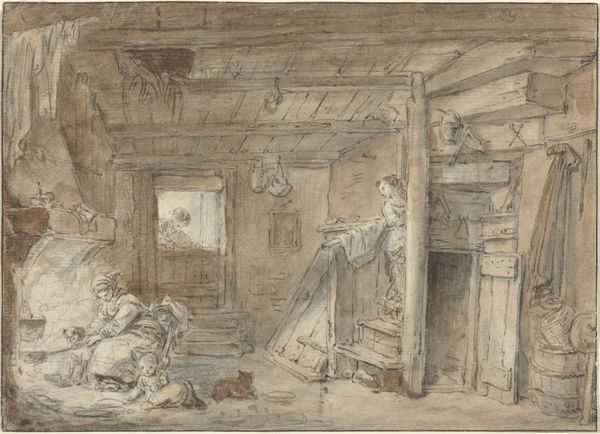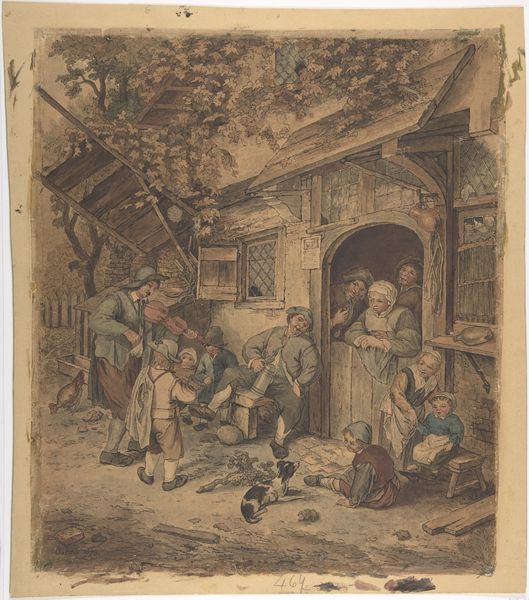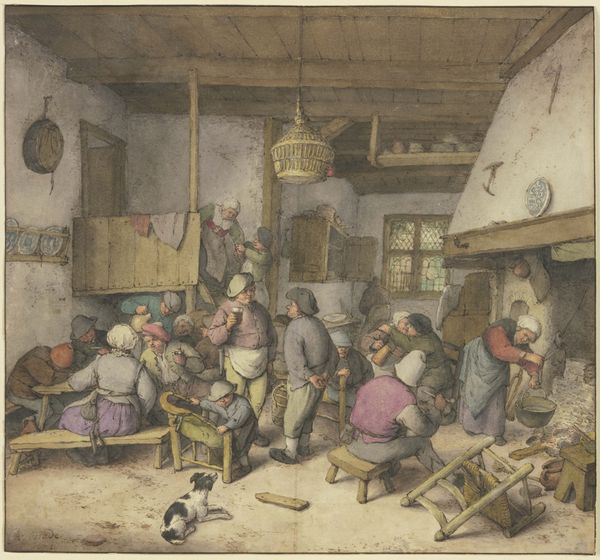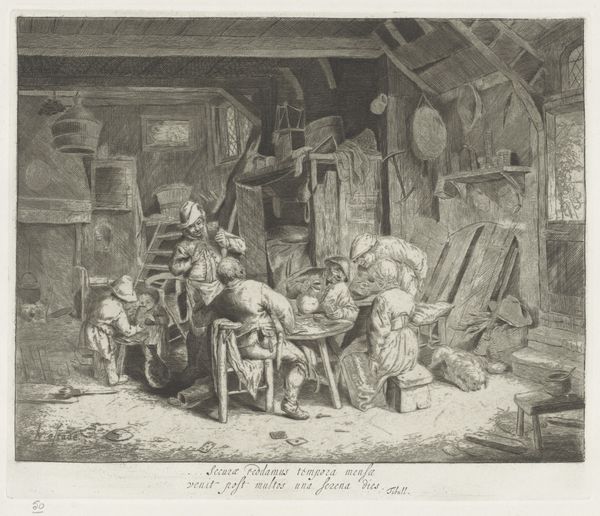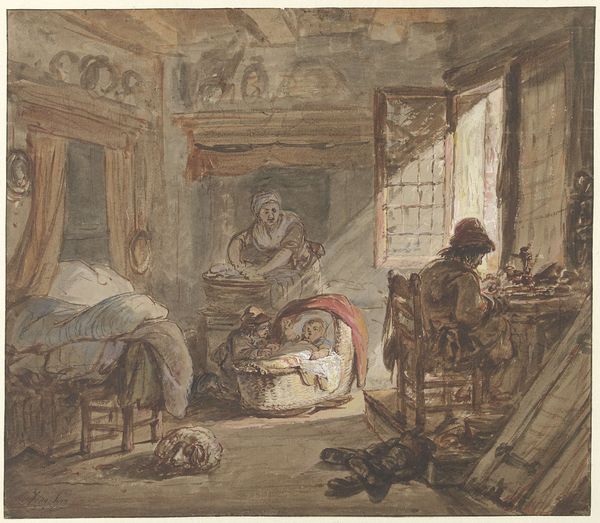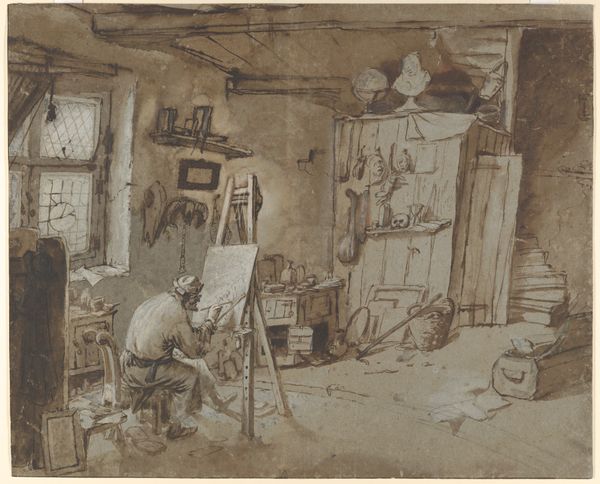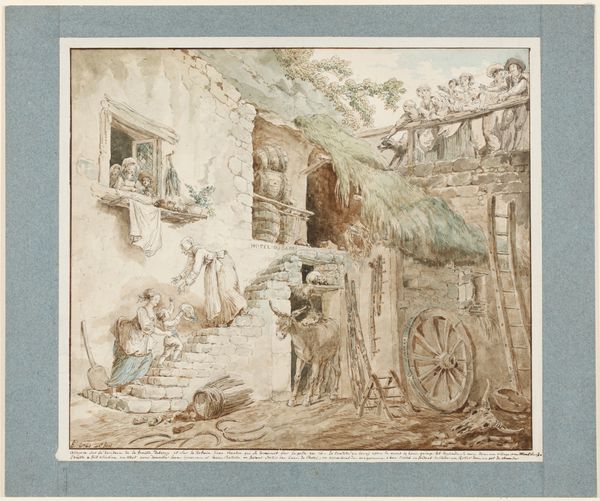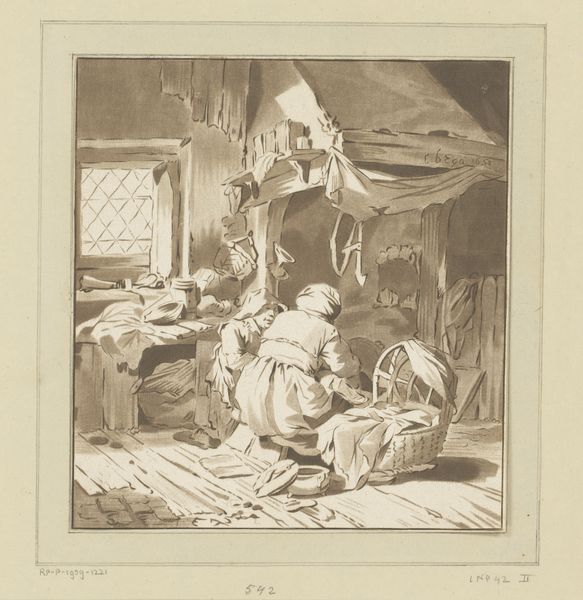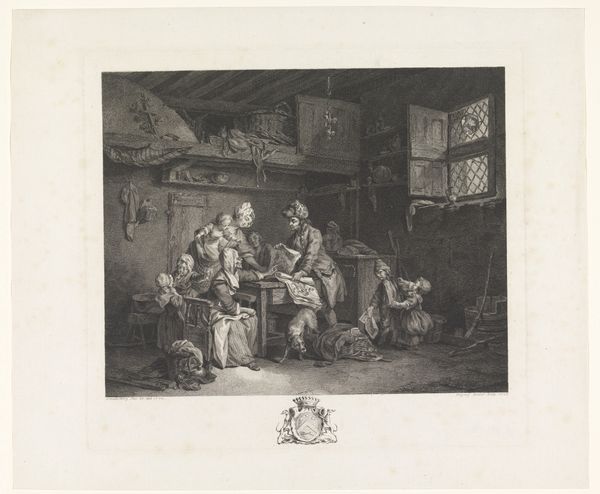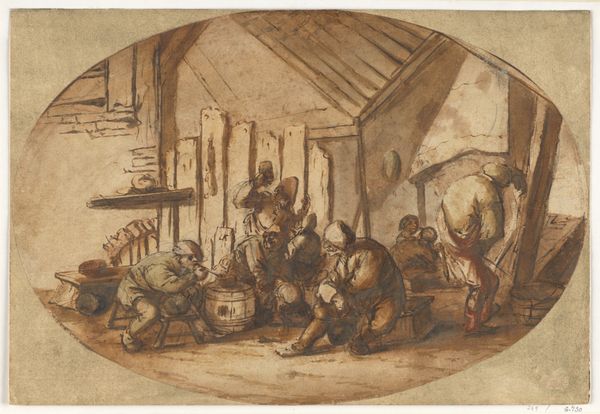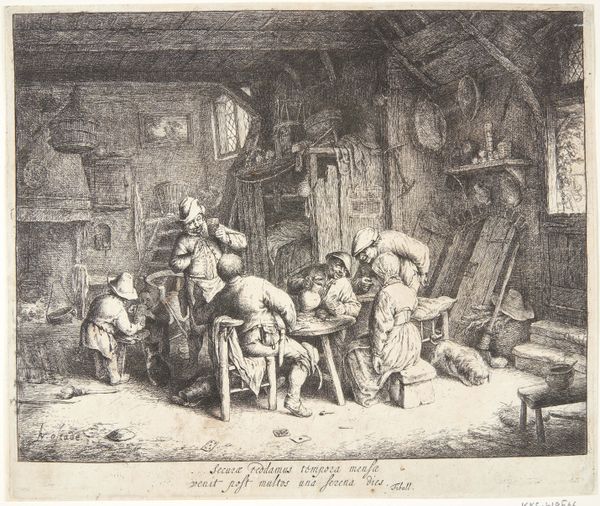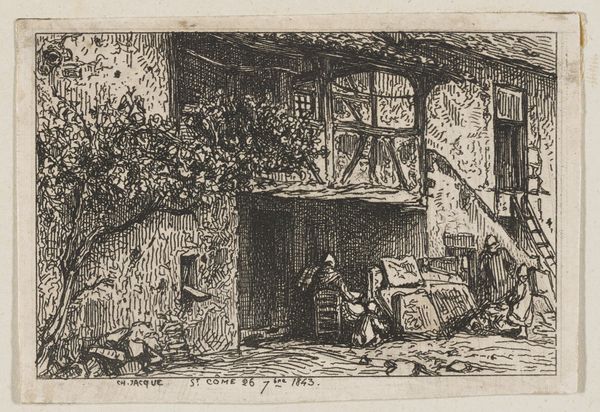
drawing
#
drawing
#
toned paper
#
water colours
#
personal sketchbook
#
child
#
coloured pencil
#
coffee painting
#
underpainting
#
traditional art medium
#
men
#
watercolour bleed
#
watercolour illustration
#
watercolor
Dimensions: 10 11/16 x 15 3/16 in. (27.1 x 38.6 cm)
Copyright: Public Domain
Curator: Isaac van Ostade's "Peasant Family in a Barn," created in the 1640s, offers an intimate look at 17th-century Dutch rural life, using watercolor and other traditional drawing medium. Editor: The scene is intensely evocative—there's such a feeling of enclosed, perhaps even burdened, domesticity suggested by the way everything crowds the frame. Curator: Indeed. Consider the loaded imagery: the mother and children are together inside of what appears to be one cramped bedroom inside a barn where their working relatives appear to be conducting manual labor. It's worth considering these kinds of images through the lens of gendered labor and how certain activities are devalued due to their association with female figures. Editor: Absolutely. Look at the way van Ostade uses recurring circular forms - the barrel, baskets, plates. It echoes across all these spaces of living. These create a sense of wholeness and continuity; each circular object becomes almost a container for an emotional or narrative theme—work, family, nourishment. Notice the cat curled by a plate; such intimate domestic iconography serves as visual relief amongst what might be read otherwise as dire, hard-scrabble working conditions. Curator: I'd push back gently against the word "relief." Those "intimate domestic iconographies" only soften our contemporary reaction; what seems "soft" to us would simply be the status quo to the domestic subject of the drawing. By aestheticizing the image's symbolism without considering historical conditions of labor, we're potentially romanticizing the gender and class relations enacted here. Editor: I appreciate that perspective. But maybe both readings can co-exist. The family is certainly persevering, that’s apparent. But to persevere, you require visual symbols and emotional bonds of what you have and hold dear: your children, pets, simple repasts. Perhaps these act as daily, internal affirmations to buttress these actors from daily exploitation? Curator: An interesting hypothesis. Editor: Ultimately, for me, the symbols invite closer consideration of the cyclical nature of daily life and how one's personal emotional arc threads into a collective one across a single familial line. Curator: Thinking about your iconographic emphasis, I realize that seeing is indeed both believing, and perhaps also a choice that involves some measure of subjective and personal identity!
Comments
No comments
Be the first to comment and join the conversation on the ultimate creative platform.
